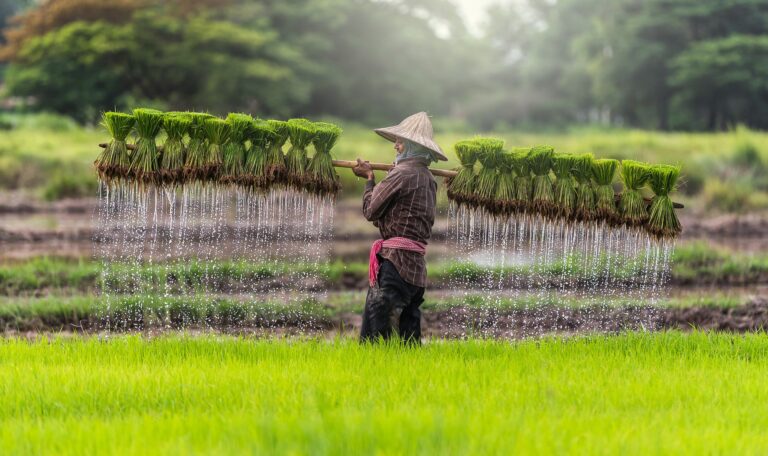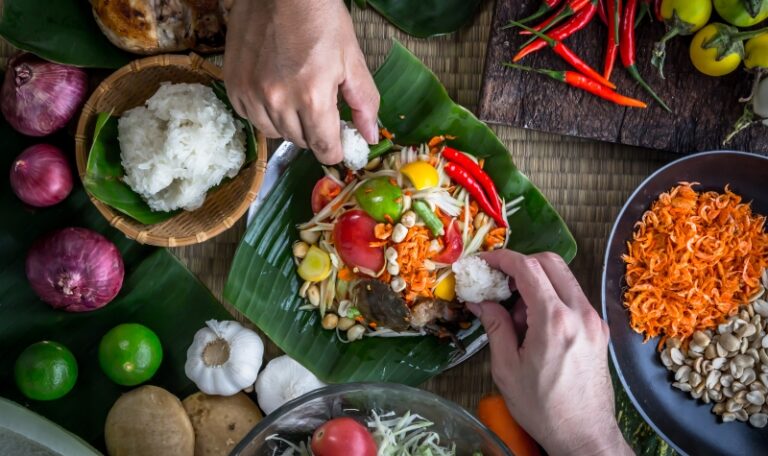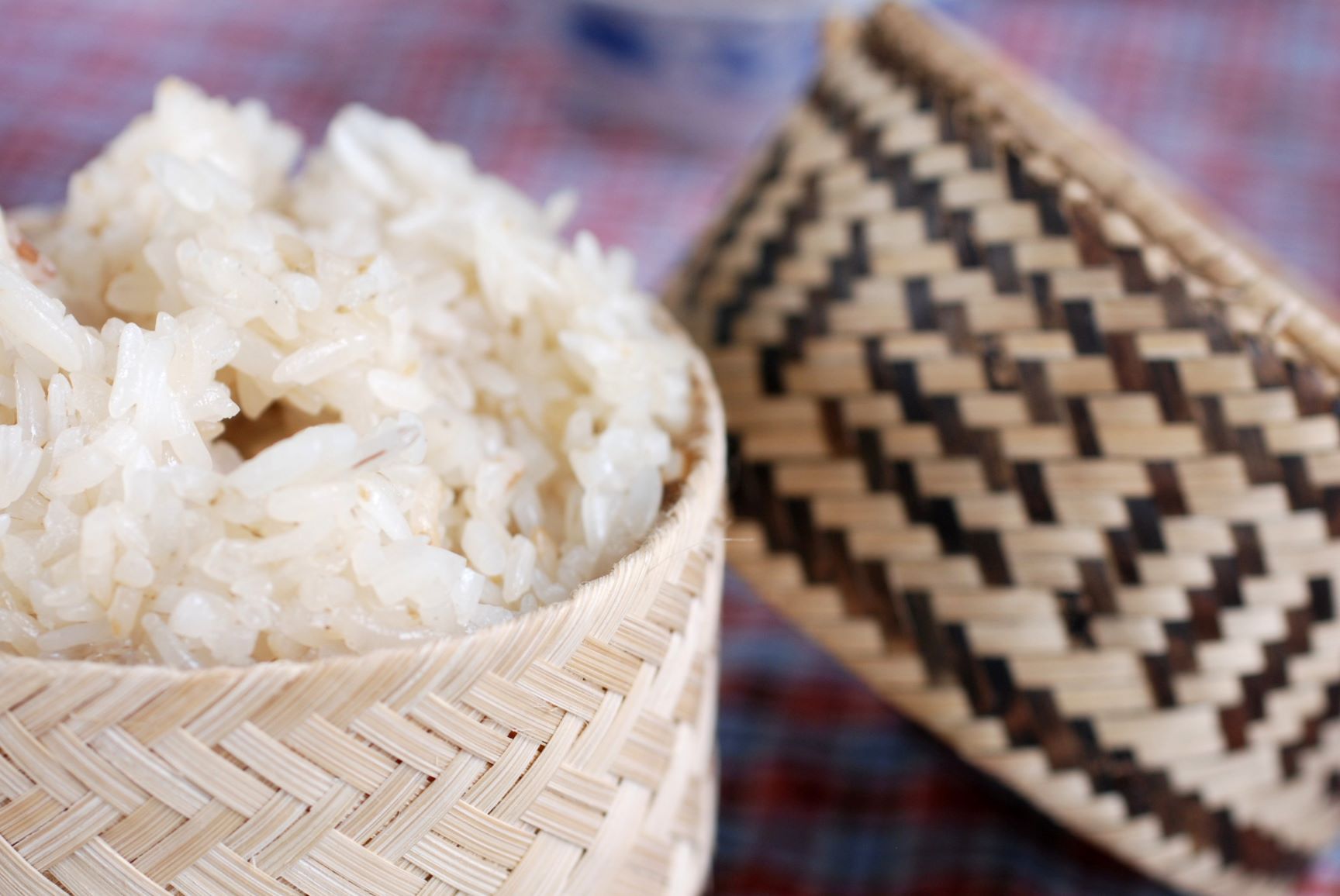Sticky Rice: The Heart & Soul of Lao Cuisine
Laos is a country known for its stunning landscapes, rich culture, and vibrant cuisine. Among the many culinary delights that define Lao food, sticky rice stands out as a staple that holds both cultural and gastronomical significance. Known in Lao language as “khao niew,” it is more than just a side dish; it’s an integral part of a Lao identity that has been cultivated for centuries.
Cultivating Tradition: A Brief History of Sticky Rice
The tradition of cultivating and consuming sticky rice dates back hundreds of years in Laos. The rice itself, scientifically known as Oryza sativa glutinosa, is distinct from regular long-grain rice due to its higher starch content. This unique composition results in a sticky and glutinous texture when cooked, making it perfect for shaping into small balls and combining with other dishes.
But sticky rice is more than just a food source—it is a traditional symbol of prosperity and community. It is typically offered during religious ceremonies, festivals, and communal gatherings. Communities and extended families come together to work together in the labour-intensive process of planting, harvesting, and processing the rice. This sense of unity and shared effort solidified sticky rice’s role as a cultural cornerstone in Lao society.

From Field to Plate: The Art of Preparation
The preparation of sticky rice is an art form that requires patience, skill, and an understanding of the grain’s unique properties. The process begins with selecting the rice and soaking it in water for several hours, and often overnight. This soaking process is crucial, as it hydrates the grains and sets the stage for thorough steaming.
After soaking, the rice is placed in intricately woven bamboo baskets known as “huad” in Lao language. These baskets are then suspended over a pot of boiling water. The steam gently cooks the rice, allowing it to become tender and sticky without losing its distinct texture. The result is a mound of perfectly cooked sticky rice.
Culinary Versatility and Social Bonding
Sticky rice’s adaptability is one of the reasons it has become a beloved part of Lao cuisine. It serves as a staple that can be paired with a wide array of accompaniments, from grilled meats and vegetables to spicy dips and fermented fish sauce. One iconic dish that showcases it’s versatility is “tam mak hoong,” a spicy green papaya salad. The rice’s mild flavor and sticky consistency complement the bold flavors of the dishes it accompanies.

Beyond its culinary applications, sticky rice fosters a sense of community and togetherness. In Lao meals, families and friends gather around a communal bowl of sticky rice and various dishes, sharing both food and stories. The act of using one’s hands to shape small portions of rice and scoop up different dishes creates an intimate and convivial dining experience. This communal style of eating highlights the importance of connections and relationships in Lao culture.
Preserving Tradition in a Changing Landscape
While sticky rice remains deeply embedded in Laotian culture, the modern era has brought about changes in lifestyle and diet. Urbanization and globalization have introduced new foods and culinary practices to Laos, influencing the younger generations’ preferences. However, despite these changes, it remains a resilient and cherished part of many a meal.
Hungry for More?
If this has whetted your appetite, then check out some of the following delicious articles:









